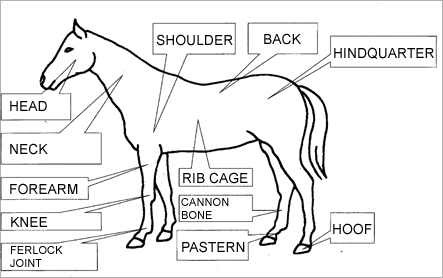 |
| ¡@ |
| Your First Racehorse |
| ¡@ |
There are a number of matters which a prospective owner should consider before he embarks upon owning a racehorse.
Financial Considerations
A successful applicant for a permit to import a horse to race in Hong Kong commits himself to two sets of expenditure. First, the initial capital outlay of acquiring and importing the horse to Hong Kong, and, secondly, the subsequent costs of training it.
The amount which an owner needs to spend on acquiring and training a horse obviously depends upon the type of ownership, since owning a horse in partnership or syndicate means that the initial capital as well as the subsequent training costs will be shared out in the proportions of the partners or syndicate members' shares in the horse.
In so far as the cost of acquiring a horse is concerned, there is no minimum or maximum amount which a permit holder must or can spend on acquiring a racehorse. It is generally known to vary from a few hundred thousand to a few million dollars. [However, it is worth bearing in mind that the speed of darker colour a racehorse is not directly proportional to the price of the horse, so one should buy wisely and should seek good professional assistance]. Having said that, a great deal of it depends on luck.
Training fees are payable on a monthly basis. The amount of training fees which an owner is required to pay each month varies from trainer to trainer. The amount an owner is required to pay in addition depends on whether the stable has a retained jockey, plus, of course, entry fees, medical or other expenses.
Countries of Import
The Hong Kong Jockey Club specifies a list of countries from which racehorses may be imported to Hong Kong. Currently, racehorses may be imported as follows :-
| Privately Purchased Horses |
Privately Purchased Griffins |
| Argentina |
Argentina |
| Australia |
Australia |
| Canada |
Canada |
| France |
France |
| Germany |
Germany |
| Ireland |
Ireland |
| Italy |
Italy |
| New Zealand |
Japan |
| Peru |
New Zealand |
| South Africa |
South Africa |
| United Arab Emirates |
United Kingdom |
| United Kingdom |
United States of America |
| United States of America |
¡@ |
|
¡@ |
Remarks: For those countries not specified in the above, please consult the Club first regarding importation procedures.
It is impossible to generalize which country or countries' horses are better suited to Hong Kong racing as almost each stipulated country has had horses imported to and raced successfully in Hong Kong. Consequently, it is very much a matter of personal preference as to which country one wishes to acquire a racehorse. Having said that, there is a belief that horses imported from the North Hemisphere tend to take a longer time to acclimatize than those imported from the Southern Hemisphere. In Hong Kong, it is perfectly permissible for an owner to seek advice and assistance of a trainer, jockey or his friend in the purchase and import of his horse. However, it must be noted that after the purchase the responsibility for the horses control and management vests entirely in the owner himself.
Choosing a Trainer
No trainer can train racehorses in Hong Kong unless he is licensed to train by The Hong Kong Jockey Club. Presently there are 24 licensed trainers in Hong Kong.
One popular way of choosing a Trainer is, of course, by referring to the past performances of the trainer. Another means of assessment a trainer's ability is by talking to other owners who may be prepared to impart their past experiences about the particular training method or style of a particular trainer.
Some trainers appear to incur a higher level of expenditure on health and medical care and other sundry expenses and this may be a factor which one should take into account when choosing a trainer.
KNOWING THE DIFFERENT PARTS OF A HORSE AND ITS CONFORMATION

HEAD
Big, with intelligent eyes which should be set wide apart. Big, broad jawls, providing ample room for wind-pipe, complimented by big, broad nostrils.
NECK
Long, strong but in proportion to body. Set well onto strong sloping shoulders. When the horse is racing at full stretch, the neck should be fully extended, providing an almost-straight line from the nostrils, through the throat and direct to the lungs for the most efficient breathing.
FOREARM
Straight, good bone covered in strong musculation. This musculature will usually be significantly heavier in sprinters then middle-distance horses.
KNEE
Symmetrical knees, ideally flat and smooth facing forward. Anything asymmetrical or offset may not be desirable.
FETLOCK JOINT
Strong, tight, round, symmetrical, in balance with the size of the rear fetlocks, with sesamoid bones (behind) held tight and not overly prominent.
RIB CAGE
Big girths with ample heart and lung room
CANNON BONE
The rear cannon should be straight and strong dropping into well-formed fetlock joints, angled pasterns and neat rear hooves.
PASTERN
When standing at rest, the pasterns should ideally be at a 45 degree angle to the cannon bone and on the the same angle as the facing edge of the hoof.
HOOF
Neat, medium sized, smooth. without ridges. Hooves should be symmetrical, facing forward.
HINDQUARTER
Should be strong. powerful, deep musculation across a well-angled chassis. The hock should be a clean, efficient joint.
BACK
Strong and short, with a gentle sloping upwards from behind the wither to the top of the hip. The back should be strongly muscled; the loins short and firm.
SHOULDER
Draw an imaginary line from the point of the wither (upper-most point of the shoulder blade) to the point of the fore chest, and back down to the elbow and you should have a 90 degree angle.
|
| ¡@ |
|
|
|
|
|
|
|
|
|
